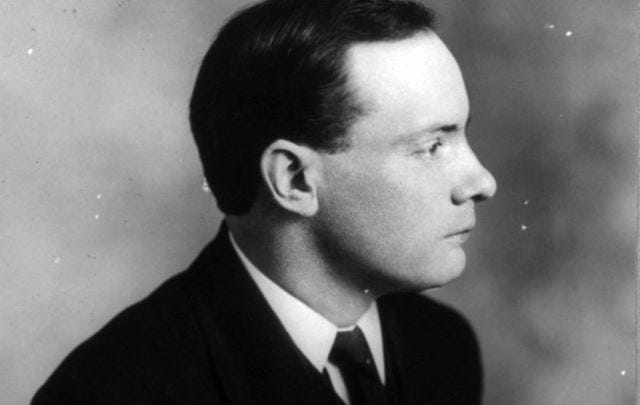Hedge Schools: The Outlawing of Irish Culture & The Fight to Preserve Knowledge
Irish History Through the Lens of Rebellion and Resistance
If you want to erase a people, you don’t just take their land—you take their language, their history, their education.
This was the strategy of British colonization in Ireland.
Under the Penal Laws, the Irish were stripped of more than just political and economic power. Their culture itself—the Irish language, Catholic education, and traditional knowledge—was criminalized. The British government believed that if they could control what the Irish learned, they could control how the Irish thought.
But the Irish refused to be controlled.
So, when schools were outlawed, they took learning underground. Literally.
They met in fields, behind hedges, in barns, in the back rooms of homes—anywhere they could teach in secret. These became known as Hedge Schools.
And in these hidden classrooms, a generation of Irish people learned to resist with the most powerful weapon of all: knowledge.
Why Were Irish Schools Outlawed?
The Penal Laws were designed to ensure that Irish Catholics remained poor, powerless, and uneducated. The British knew that education was dangerous because it created leaders, critical thinkers, and revolutionaries.
The laws made it illegal for Catholic schools to operate, and Catholic teachers could be arrested, imprisoned, or even exiled for teaching. This forced generations of Irish children into ignorance, dependency, and colonial submission.
Meanwhile, Protestant "Charter Schools" were established by the British, which functioned much like the Indigenous residential schools in North America—they forced Irish children to speak English, adopt British customs, and abandon their Irish identity.
But the Irish refused to surrender.
How Did Hedge Schools Work?
Hedge Schools were run in secret by traveling teachers, often poor scholars or former priests, who risked everything to pass on knowledge.
Subjects taught: Irish history, reading, writing, mathematics, Latin, Greek, and sometimes even French—so that Irish students could communicate with European allies.
Location: Hidden in fields, barns, private homes, and behind hedges, with lookouts to warn of approaching British authorities.
Teaching style: Oral storytelling, memorization, and discussion—keeping the Irish language and history alivethrough the spoken word.
These schools weren’t just about education—they were about resistance.
To learn Irish history under British rule was an act of defiance.
To speak the Irish language in a world that demanded English was an act of rebellion.
To teach at a Hedge School was to risk imprisonment or worse.
The War on the Irish Language
More than just Catholic education was outlawed—the Irish language itself was under attack.
The British government wanted Gaelic (Irish) to disappear, believing that forcing the Irish to speak English would strip them of their identity.
The 1366 Statutes of Kilkenny tried to ban Gaelic centuries earlier.
By the 18th century, Irish was forbidden in schools, courts, and official documents.
Speaking Irish became a sign of rebellion—so much so that even today, Irish Republicans often use Gaelic phrases in defiance of British rule.
Despite this, Hedge Schools continued to teach in Irish. The language survived, hidden in whispers and songs, passed down in defiance of empire.
And that defiance still exists today.
Even now, the revival of the Irish language is part of the movement for Irish independence—because to speak Irish is to reclaim what was stolen.
The Black-Irish Connection: Freedom Schools and Education as Resistance
If the Hedge Schools sound familiar, it’s because colonizers use the same tactics wherever they go. But oppression is predictable—and so is the response. Wherever education was outlawed, people found ways to teach in secret.
For enslaved Africans in the U.S., literacy was illegal. Slave owners knew that education led to liberation, so they banned enslaved people from reading and writing. But brave teachers risked everything to pass on knowledge in hidden “pit schools” in the woods or behind plantation houses—just like the Irish held classes behind hedges.
For Indigenous children in Canada and the U.S., boarding schools erased language and culture. Indigenous children were stolen from their families and forced into Christian schools, where they were beaten for speaking their native languages—just as the Irish were punished for speaking Gaelic.
For Black Americans under Jim Crow, segregation kept education out of reach. But just as Hedge Schools defied British laws, Black communities created their own institutions.
One of the most powerful examples?
Freedom Schools.
During the Civil Rights Movement of the 1960s, Black organizers created Freedom Schools to educate Black children about their history, their rights, and their power. These schools, much like the Hedge Schools, were more than just places of learning—they were training grounds for resistance.
They taught:
Black history that was excluded from public education.
Civic engagement, preparing students to fight for voting rights.
Self-determination, making it clear that knowledge was a tool of liberation.
Hedge Schools. Freedom Schools. Underground education.
Wherever empire has sought to erase people, people have fought back with education.
Because knowledge is not just power—it is freedom.
Breaking the Chains: How the Hedge Schools Paved the Way for Revolution
By the early 1800s, the Hedge Schools had taught thousands of Irish children—many of whom became the leaders of future Irish rebellions.
Daniel O’Connell, “The Liberator”, who fought for Catholic emancipation, was taught in secret.
Padraig Pearse, a leader of the 1916 Easter Rising, saw education as a weapon against colonization.
The Irish War of Independence (1919-1921) was fought by a generation that learned their history in Hedge Schools.
These schools kept Irish history, language, and identity alive—and that survival led to revolution.
Final Reflection: The Stories That Must Be Told
The British outlawed Irish education to make sure that Irish people would never know their own history.
But they failed.
Because Hedge Schools preserved more than just knowledge—they preserved a spirit of defiance that has never been extinguished.
And today, when we fight for the right to learn, to speak our languages, to teach our histories, we are carrying that same fire.
Education is always a battleground.
Oppressors fear knowledge because knowledge creates freedom.
And history is only erased if we let it be.
So, we remember. We teach. We resist.
Because learning is liberation.
Further Learning: Watch, Read, and Engage
📺 Watch:
Hedge Schools, Beyond the Shuruberry – A look into how these secret schools operated.
Blackboards (2000) – A film about secret teachers in colonized Iran, showing parallels to Hedge Schools.
📖 Read:
How the Irish Saved Civilization by Thomas Cahill – A look at how Irish scholars and rebels preserved knowledge through history.
The Hedge School by William Carleton – A historical novel about the resilience of Irish teachers.
🍽 Cook:
Soda Bread & Potato Farls – A simple meal that sustained Irish students in hard times.
🎵 Listen:
“Mo Ghile Mear” (muh ghil-eh mar)– A song of loss and resilience, sung in Irish.
“Óró, Sé do Bheatha ‘Bhaile”(Oh-roe shay duh vah-ha wall-ya) – A rebel song that calls for the return of Ireland’s stolen sovereignty.
The Outlawing of Irish Culture: Music, Dance, and Storytelling as Acts of Rebellion
After centuries of colonial suppression, it wasn’t just Irish education that was outlawed—Irish music, dance, and oral traditions were also targeted for erasure.
The Penal Laws criminalized Irish gatherings, including céilís (traditional dance events).
The British banned Irish music, fearing it would incite rebellion.
Traditional Irish storytelling and seanchaí (oral historians) were nearly wiped out.
But despite these oppressive laws, Irish culture never died—it was carried in secret, in whispers, in hidden gatherings, and passed down through generations.
Further along in this series we will explore:
The role of music in Irish resistance—from banned rebel songs to underground sessions.
How dance became a silent act of defiance, leading to the preservation of Irish step dancing.
The power of storytelling and how Irish oral traditions kept history alive when it was forbidden.
How these same cultural suppression tactics were used against Black and Indigenous communities.
Because when empire tries to silence a people, their songs, dances, and stories become weapons of survival.
Join us tomorrow for the next chapter in Irish resistance—The Statutes of Kilkenny: The Blueprint for Segregation and Cultural Erasure
Support This Work: Keep History Alive
This article, like all in this series, is free for the month of March—but after that, they will only be available through the 59 Days of Resistance: A Journey Through Black and Irish Liberation lesson plan.
📖 Want to keep learning? Get the full curriculum here:
👉 59 Days of Resistance Guide
If you believe in education as liberation, consider becoming a paid subscriber. Your support ensures that these histories continue to be told.
In solidarity and liberation,
Desireé B. Stephens CPS-P
Educator | Counselor | Community Builder
Founder, Make Shi(f)t Happen








so real